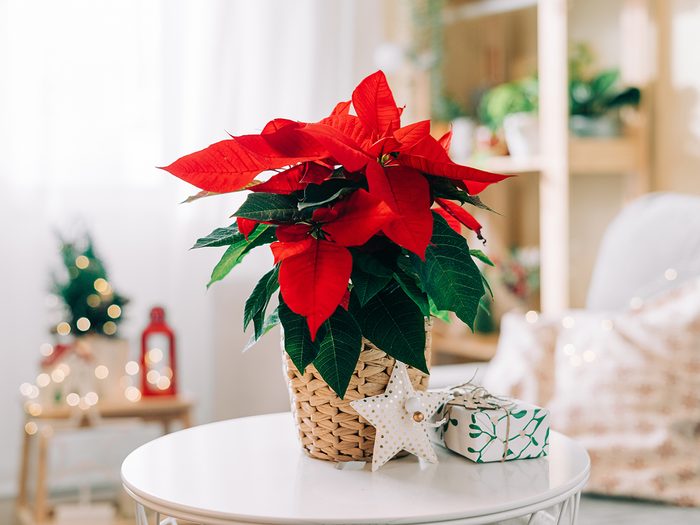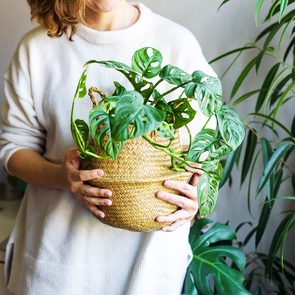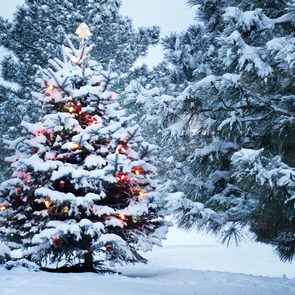How to Care For Your Poinsettia After the Holidays

With the proper care, your holiday houseplants can last well into the new year.
Poinsettias are popular both as gifts and festive decor, but novice and experienced gardeners alike can use some tips on how to care for poinsettias over the holidays—and beyond. Check out these pro poinsettia care tips and advice for other popular holiday houseplants.
How to Care For Poinsettias
Many people simply keep their poinsettias around until they’ve lost their coloured leaves, and then throw them out. But with a little care, poinsettias can be brought back to bloom year after year.
- Poinsettias are photosensitive, and bloom only when they receive at least 12-14 hours of complete darkness each day. To keep them blooming year after year, you just need to mimic their yearly growth cycle.
- For now, keep your potted poinsettia in a bright sunny window and water well when the soil feels dry. In spring, cut it back and transplant it to a bigger pot. You can move it outside for the summer months if you like. Next fall, begin ensuring the plant receives the necessary 12-14 hours of darkness by keeping it in a room with no artificial light, or placing a box over it at night. The coloured leaves and blooms should appear in about eight weeks.
- If you live in zone 9 or higher, skip all the complications and just try growing poinsettias outside! Plant them in well-drained soil where they will receive plenty of sun, but avoid areas that have nighttime lighting, like streetlights or solar lighting. This will keep them from blooming. In warm climates, the tiny yellow flowers will even draw butterflies in winter!
Christmas cactus
Like poinsettias, Christmas cactus knows it’s time to bloom when they start receiving 12-14 hours of complete darkness each night. Water sparingly throughout the year and keep in bright indirect light.
- When fall arrives, follow the same procedure as with poinsettias, keeping them in a room with no artificial light or placing a box over them at night.
- You can try growing Christmas cactus outdoors in warmer climates, but this plant is from the coastal mountains of Brazil and has very specific growing conditions. You’ll do better keeping it in a pot so you can monitor and adjust the conditions more easily.
Amaryllis
Because your amaryllis bulb was likely “forced” to bloom in time for Christmas, especially if you received one in full bloom, it may take a few years before this warm-climate bulb is ready to flower again. Don’t give up, though! Amaryllis are pretty easy to care for in the off-season, and their spectacular blooms make it worth your effort when they return.
- Again, if you live in zone 9 or higher, just plant these outdoors. Once the flowers have died, cut the stalks back and plant outside. They do best in part shade with bright filtered light, but can withstand a variety of growing conditions as long as the soil is well-drained. Give them plenty of water all summer to encourage new growth, but taper off in the fall. Look for bloom stalks to appear by March or so. (Amaryllis natural bloom time is in the late winter or early spring, so they will not bloom for Christmas in the years ahead.) Like other bulbs, these will grow offsets (bulblets) that can be divided and planted elsewhere.
- In cooler zones where you must keep your amaryllis in a pot indoors, your goal will be to mimic the natural life cycle, including water and light.
Paperwhites and other forced bulbs
Unfortunately, these bulbs are unlikely to bloom again next year. They have been “forced” by the growers to bloom quickly in the holiday season, and have used up all their stored reserves. If simply throwing them away is just too hard for you, you can try planting them outdoors to see what happens, but don’t count on them returning.
Check out more festive Christmas flowers (that aren’t poinsettias).






